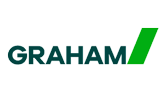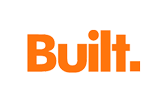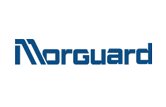COVID-19 & Construction: 5 Ways to Keep Your Crew Healthy
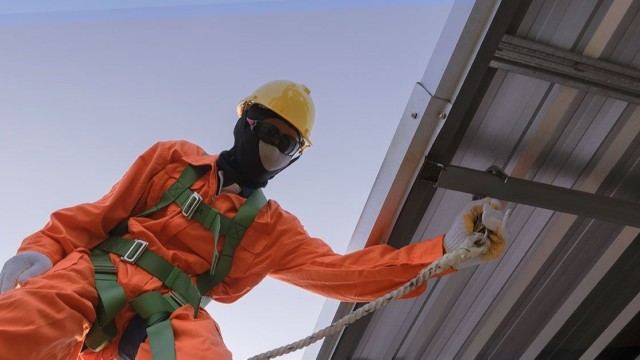
Both the CDC and OSHA posted guidelines for worker safety specific to limiting the spread of COVID-19. We spoke to healthcare professionals to understand how to apply these on-site, as well as additional tips for ensuring everyone’s well-being.
Generally, construction workers at most sites do not need overly special precautions beyond those already used to protect them from the hazards they encounter during their routine job tasks. However, various combinations of engineering and administrative controls, safe work practices, and PPE may be appropriate for construction workers, depending on the results of their employers’ hazard and risk assessments.
Infected people can spread COVID-19 through respiratory secretions — so, basically, by coughing or sneezing. According to the CDC, person-to-person spread is most likely among close contacts — hence the six-foot social distancing rules. You can also get COVID-19 by touching a surface or object that potentially has the virus on it and then touching your own mouth, nose, or possibly their eyes — a reminder to stop touching your face!
Beyond that, here’s how to limit the spread on the jobsite.
1. Screen all employees’ medical records
Per the CDC, employees who have serious chronic medical conditions like heart disease, diabetes, lung disease, and mental health conditions such as depression and anxiety are more prone to serious complications when dealing with the coronavirus.
Access to personally identifiable crew members’ medical records for high-risk employees is crucial to saving lives. Keeping employees healthy and productive is not only sound on a moral level but a financial one as well. Health checks and lifestyle assessments usually comprise a combination of tests, which aim to give an individual a general overview of their health status and help to detect disease or risk factors early. Health checks could be provided through the NHS, a private medical provider, or as part of occupational health provision but should always be carried out by trained professionals who can offer good advice on the next steps, as necessary.
2. Have everyone wear masks & gloves
The CDC now recommends you wear a mask when going in public — not only because it will keep you from getting the virus, but because it could stop you from giving it to others if you don't even know you have it.
"We recognize that this virus is mostly transmitted in clusters where people are in close contact for a little bit of time," says Dr. Aileen Marty of Florida International University. "And this is particularly true when we are talking about that asymptomatic transmission."
Obviously, healthcare workers and doctors must come first when protecting themselves against coronavirus. Crew members don’t necessarily need an N95 mask, so consider asking your crew members to make their own at home. As to gloves, request your crew members to wear their heavy-duty work gloves at all times on-site. When they go home, advise them to bleach wash them for the next day.
3. Keep temperature logs
The Equal Employment Opportunity Commission (EEOC) gave employers the green light to take employees' temperatures to try and ward off the spread of the coronavirus in guidance updated March 18. Here’s how to implement that on-site every day.
At the start of each day, ensure every crew member has their temperature taken before going to work. It’s all about structure and making sure employees know the date that the system is being implemented, what it will look like, and why. No one likes being caught off-guard, even if it’s just a temperature check.
Take and log crew members’ temperatures three times a day — morning, afternoon, and at the end of the day. Christine Walters, J.D., SHRM-SCP, an independent consultant with FiveL Co. in Westminster, Md., cautions employers against using oral thermometers, which are more invasive than infrared digital thermometers. Infrared digital thermometers can be used to measure temperature by holding the thermometer over the central forehead approximately 3 cm from the body surface.
Here's a sample Fieldwire form for tracking worker health. Click to download.
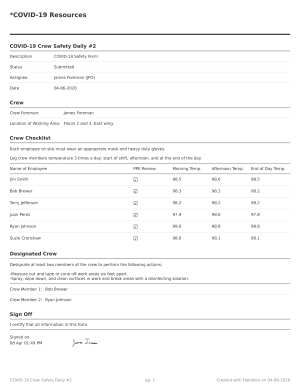
Create your own safety forms with custom forms in Fieldwire. Learn how.
4. Secure six-foot markers at workstations
When someone coughs or sneezes, tiny near-invisible drops spray out. If you’re standing too close, you can breathe them in. Those droplets could contain the coronavirus if the person coughing is infected. Six feet is far enough to be out of reach.
Obviously, having a mask and gloves on will lessen the chance of these droplets entering your crew members’ systems, as well.
Delegate crew members to measure out and tape off their work areas six feet apart. Consider setting up cones as well.
5. Clean all areas on-site
Though the coronavirus is spreading mostly via person-to-person contact, people can also catch it from surfaces. Droplets from an infected person’s coughs or sneezes can survive for hours or days on surfaces, according to health officials.
Use a mechanical sprayer or thermal fogger that mists disinfectant into the air before wiping all surfaces down. Health experts say it’s enough to clean frequently with soap, alcohol, or bleach-based products.
“You don’t need any unusual procedures or cleaning agents,” says Dr. Timothy Brewer, professor of medicine and epidemiology at UCLA. Consider equipping every crew member with a spray bottle of bleach water or disinfectant and a rag. Completely wipe down every work area before and after shifts. Consider hiring a company like Aftermath that specializes in biohazard remediation once or twice a week to ensure every area of your site is safe and clean for your team.
Workers should also try and keep tool-sharing to an absolute minimum.
"Even though sharing tools was normal before, this is a habit that must be stopped," Andrew Wilson of Contractor Advisorly says. "When tools need to be shared, then the company should be supplying employees with alcohol wipes to clean the tools before someone else touches them."
Stay safe!

 Dominic Delfino •
Dominic Delfino • 
